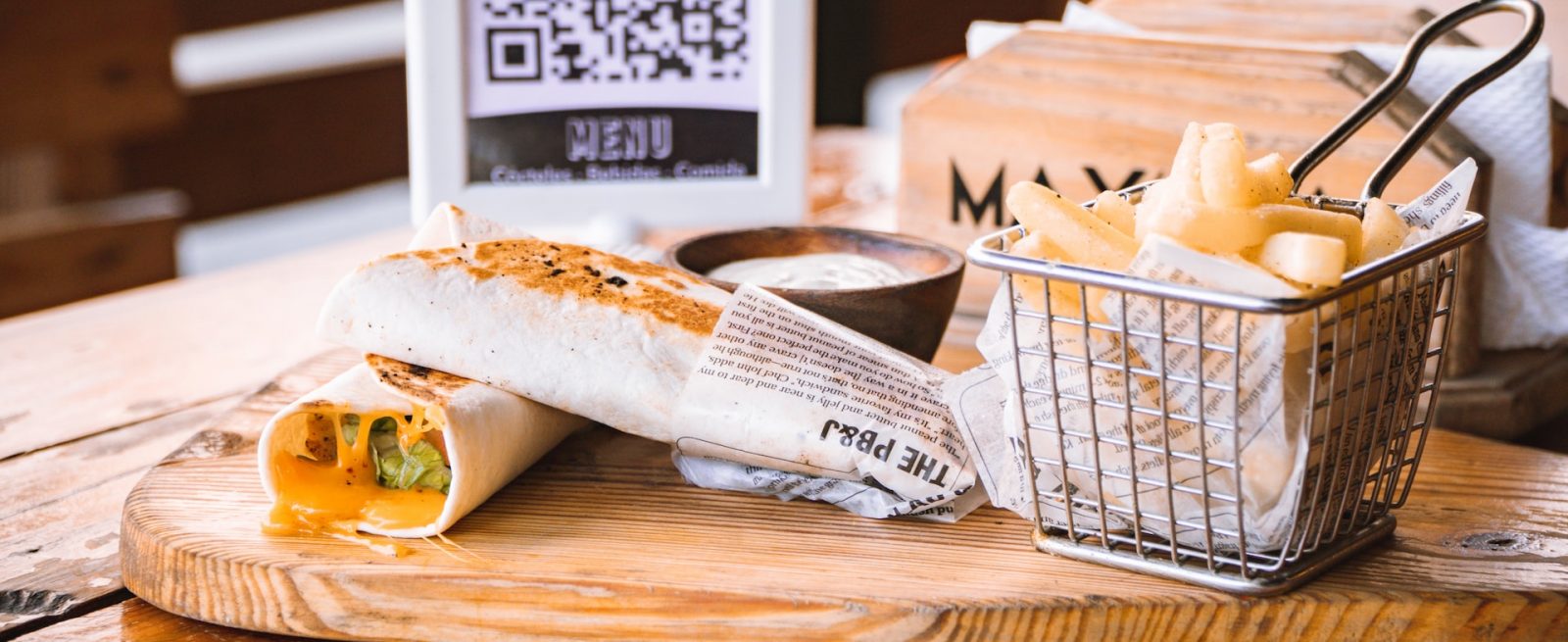Enhancing Guest-Centric Experiences with QR Code Technology and Time-Tested Human Connections
5 Min Read By Eric Seymour
The pandemic dealt a mighty blow to the bar and restaurant industry, where social distancing replaced friends and families gathering together to share stories, celebrate milestones, and create lasting memories. As the doors began to reopen, slowly and cautiously, restaurants and bars, still coping with labor shortages and inflation, had one new challenge to overcome — higher expectations. Restaurant staff expect better pay and improved working conditions, while diners expect more convenience and faster service — without sacrificing the human touch.
By implementing a QR Code at-table, two-way ordering system, servers can wait on more tables, increase their tips, and spend more one-on-one time with guests. Customers can enjoy a seamless dining experience, and restaurant operators can realize greater returns on their investments.
Tech-Driven Strategies for Tech-Savvy Diners
Hospitality is a guest-centric industry, and as such, it has a vested interest in exploring opportunities to enhance the customer experience. From the digital revolution of the 1980s, the advent of the internet in the 1990s, and the proliferation of smartphone and AI technologies in the 21st century, restaurant and bar owners must keep pace with the latest tech trends to achieve sustainable growth and maintain a steady stream of revenue.
The restaurant industry, once slow to adopt modern technology, has undergone a significant digital transformation in response to the pandemic. With survival as the driving force, restaurants now fully embrace the latest tech. PYMNTS reports that about 55 percent of restaurants have adopted curbside pickup, and 50 percent provide mobile order-ahead options. As economic challenges persist, the restaurant sector is poised to further integrate technology. In a 2022 survey, 75 percent of restaurant operators expressed their intention to incorporate new technology to tackle labor and cost challenges. Moreover, consumer expectations for innovation are growing, with 70 percent expressing a strong interest in the integration of technologies such as AI voice assistants and smartphone apps.
There are 6.92 billion smartphone users worldwide, nearly 86 percent of the global population, and there has been a 750 percent increase in QR Code downloads since 2019. Customers are fully onboard with technology, with 70 percent to 80 percent of restaurant and bar patrons giving high praise to the benefits of guest-facing technology and applications, such as mobile apps and electronic ordering. QR code scanning for ordering and payment utilizes smartphone technology to elevate the dining experience for guests, alleviate the burden on overworked staff, and boost revenue for restaurant and bar owners. Diners can effortlessly scan a QR code on their table using their smartphone, access an interactive digital menu complete with suggestions like food and drink pairings, and complete their payment with a single click.
An estimated 90 percent of smartphone users will scan a QR code this year. Implementing QR code technology for ordering not only taps into this expanding customer base but also positions businesses more competitively, elevating the dining experience and bolstering revenue.
Advanced QR Code at-table two-way ordering solutions represent a sophisticated and more efficient approach for restaurants to operate. It minimizes order inaccuracies and improves guest communication and the overall dining experience. QR Order & Pay technology has the potential to significantly lower restaurant labor costs, ranging from 30 percent to 50 percent, by reducing or even eliminating the necessity for servers to take orders and handle payments.
Tech’s Role in a People-Centric Industry
By collecting data on guest preferences, restaurants can also anticipate ordering trends, resulting in cost savings and reduced food waste. The payment process is simplified, ensuring security and fraud prevention while eliminating the requirement for manual calculations. Incorporating QR code technology into restaurant operations can potentially amplify restaurant revenue by up to 35 percent. Currently, 75 percent of restaurants plan to adopt contactless ordering and payment solutions; at the same time, 79 percent of customers say that technology improves their restaurant experience.
According to a Cornell hospitality report, at an average full-service restaurant, 30 percent of a server’s time is spent taking orders, dropping checks, and processing credit cards. At-table ordering frees up servers to spend more quality time with guests, who value the added attention. Diners appreciate having control over their service and payments, and since guests do not have to find their server, 29 percent order additional rounds, which generates a 12 percent increase in sales. The shortened turn times naturally allow restaurants to accommodate more customers, which increases overall revenue from previously unmet demand.
A collaborative research report by industry experts revealed that 49 percent of consumers favor establishments that provide smart technology features, including customized menus that offer food and drink recommendations tailored to their preferences. An overwhelming 70 percent of Americans who frequent bars and restaurants anticipate smart technology will be the future of most eating and drinking establishments, and 66 percent welcome the addition of food service apps, especially when splitting the bill with friends. Despite the resounding enthusiasm for tech, 81 percent of patrons emphasize that bars and restaurants continue to revolve around people and human interactions.
Bars and restaurants of the future will be a more immersive experience for guests:
-
Smart technologies offer more than just efficiency; QR codes yield valuable insights into guest foot traffic, behavior, and preferences. This data can be leveraged for informed decision-making, enabling businesses to anticipate service needs based on data-driven analysis.
-
The future of dining might feature meta-events, sending diners on a virtual journey to the vineyard where their wine was cultivated.
-
Venue operators must expand their horizons beyond the main course by introducing enjoyable activities like mini-golf and arcade games.
-
AI is set to usher in a fresh era of hospitality, giving rise to hyper-personalized venues that cater to each visitor’s unique background and preferences.
Tech-Infused Dining: Elevating Efficiency, Profit, and Guest-Centricity
Maintaining customer loyalty is critical to profitability. Acquiring one new customer requires five times the investment of retaining an existing one. Just a five percent uptick in customer retention can deliver an additional 25 percent to 95 percent increase in profit.
A two-way ordering system empowers both customers and servers to place orders and add items to the table simultaneously, ensuring synchronized dining experiences. It offers the convenience of QR-based or server-assisted payments with the added perk of check-splitting options, sparing customers the hassle of dividing up the check. Restaurant operators can control the default tip percentage using an automated tipping feature to increase earnings for their servers.
QR code technology drastically reduces human error and eliminates the friction points associated with outdated, manual processes that can be a source of frustration for servers and guests. At-table ordering maximizes efficiency, enabling servers to cover larger sections, while managers can optimize their resources for more efficient operation and improved flexibility. Waitstaff can focus on what they do best, engaging guests and creating a memorable dining experience.
The QR code table ordering menu and payment system helps create a unique and lasting connection between restaurants and guests, retain staff, and maximize efficiency. By taking advantage of novel technology, restaurant operators can work smarter, streamline operations, and maximize revenue.
Customized features have been shown to improve upselling with product prompts and recommendation algorithms that encourage diners to spend more, increasing the total check by up to 30 percent. Integrated marketing tools foster stronger customer loyalty. The streamlined at-table ordering process allows servers to concentrate on building guest relationships and crafting magical moments.
While technology has proven to be an invaluable ally, dining out still centers on genuine human connections. In an industry that has witnessed substantial transformations in recent years, the heart of hospitality remains unchanged.


